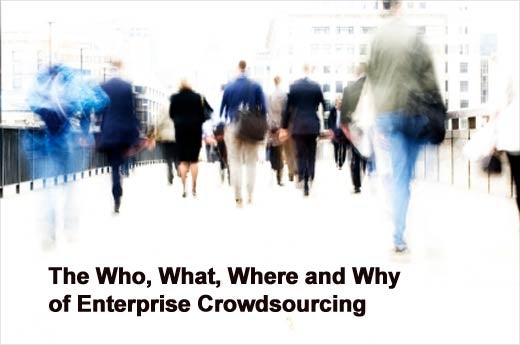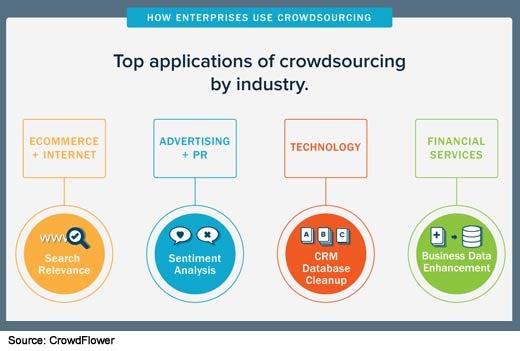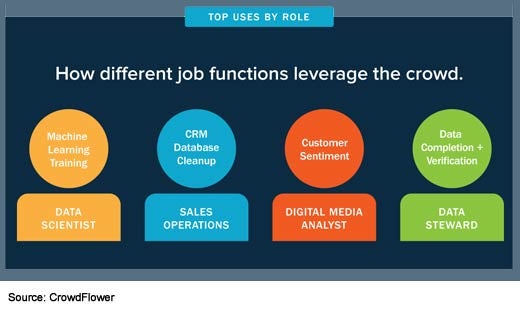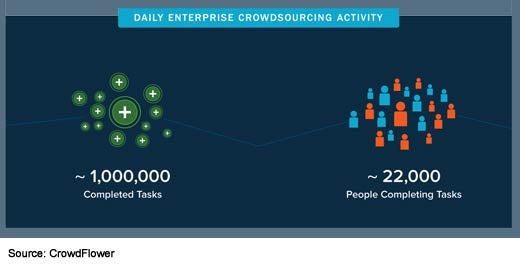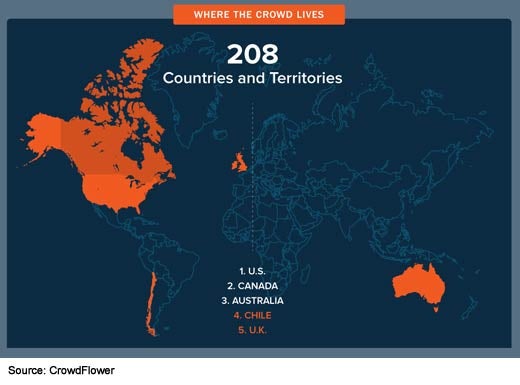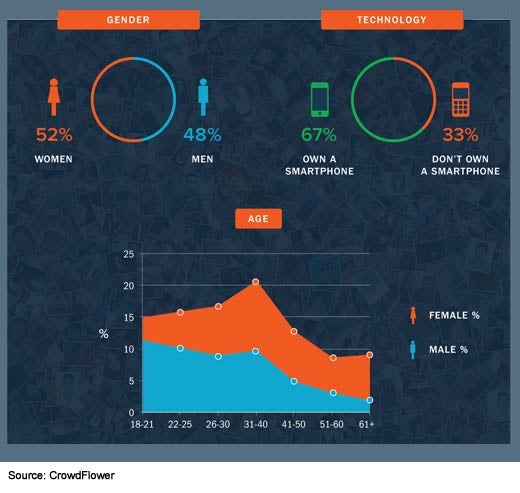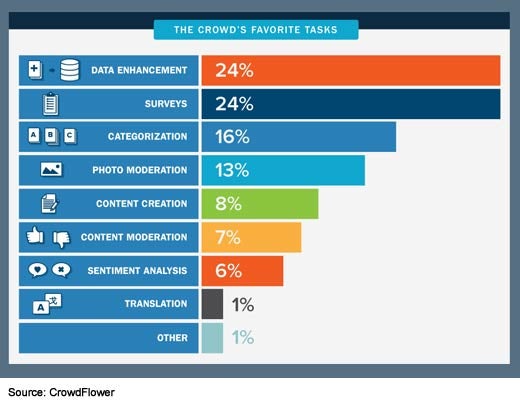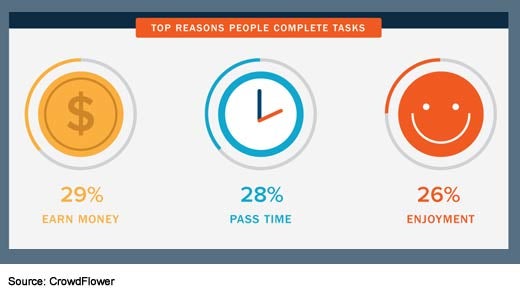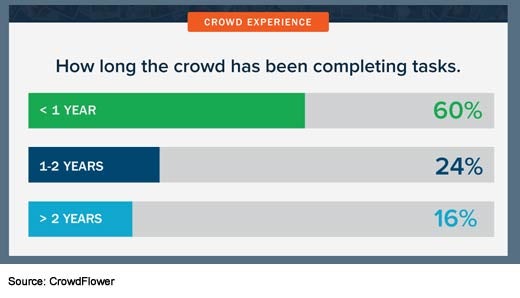Looking at both the demand side – the companies asking for work, or tasks, to be done – and the supply side – the people in the crowd completing the work, or tasks – CrowdFlower was able to show the complete landscape of enterprise crowdsourcing. The data comes from looking specifically at the types of projects their 50 largest customers are undertaking, and a survey they completed of more than 2,000 crowd “contributors” – those who complete these tasks. Through this research, they found some interesting things.
Click through for findings from a survey on enterprise crowdsourcing, conducted by CrowdFlower.
The enterprises using crowdsourcing
First, the largest users of enterprise crowdsourcing are e-commerce, advertising and PR, technology and financial services organizations. All use crowdsourcing for data-oriented projects, and for the unique needs of their industries:
- E-commerce and Internet – Checking search results to make them more relevant for users. Many Internet users don’t realize that the crowd is constantly spot-checking search results to help developers make the results more relevant to search terms in order to increase engagement or conversion.
- Advertising and PR – Examining tweets and Facebook posts to understand how users really feel about a given company or product. Machine-ranked tweets are notoriously unreliable, i.e., sarcasm doesn’t compute, and so advertising and PR firms need human sentiment analysis to scan and rank topic-related content on social networking sites.
- Technology – With more and more sales happening online, accurate customer databases are more important than ever. Seventy percent accuracy just doesn’t cut it anymore. Companies now need at least 90 percent accuracy, in countries and languages around the world – and with social media handles. The crowd is excellent at doing this on a massive scale.
- Financial services – Finance runs on data, and the crowd is ideal for collecting large amounts of data on companies and management teams from around the world to help inform financial services firms’ operations.
Top uses by role
There are many other types of customers using crowdsourcing, so CrowdFlower also segmented uses by role:
- Data scientists use results from the crowd to train their machine learning algorithms and make them more efficient.
- Data stewards turn to the crowd to help complete their master customer and product profiles.
- Sales operations are similar to data stewards, but focus on complete customer data, and have a higher interest in social media credentials for sales and marketing efforts.
- Digital media analysts at agencies or in-house use the crowd to interpret the sentiment of tweets and other content on social media.
A view of the crowd
No matter the type of work, the volume is large, with an average of 22,000 people completing one million tasks per day.
Where the crowd lives
And who is doing all of this work? Contributors from around the world – 208 countries and territories to be exact, with the U.S., Canada and Australia topping the list – debunking the perception that crowdsourcing is perpetuating the offshoring trend. Quite the opposite.
Contributors are split almost evenly between women and men overall (52 percent vs. 48 percent), but it gets interesting to look at the age breakdown. The percent of men peaks early in the 18-21 year old age bracket and declines from there. CrowdFlower thinks this is due to the high percentage of younger males who are members of game-related partner sites and do game-related sentiment analysis work. The percentage of women peaks in middle age – perhaps because they work at home, but they are not sure. CrowdFlower also found that nearly 10 percent of contributors are nearing retirement age, leading them to think completing tasks may be an opportunity for seniors to stay engaged and earn extra income after retirement.
So, what does the crowd like to do?
- Twenty-four percent like data enhancement – CrowdFlower believes this is because there is a large supply of this kind of work, and everyone enjoys the sleuthing involved in confirming a location or a person’s name.
- Twenty-four percent like surveys – everyone likes to be asked their opinion, and this is relatively easy work to complete.
- Photo (13 percent) and content (seven percent) moderation are perhaps not as interesting, with slightly lower popularity. Sentiment analysts, at six percent, is perhaps in the same boat.
- Content creation – which is usually the writing of short product descriptions – is in the single digits, but anecdotally on the rise as it takes a bit more creativity and contributors enjoy the result of their work.
Top reasons people complete tasks
CrowdFlower also wanted to know why people do this work. While 29 percent not surprisingly said they participate to earn money, almost as many said they do it to pass the time (28 percent) and because they enjoy it (26 percent).
Crowd experience
Lastly, CrowdFlower was pleased to see the number of contributors who are sticking with crowdsourcing. Forty percent have been engaged for more than a year. They believe these people will be gaining proficiency and additional skills the longer they complete crowdsourced tasks. As demand for enterprise crowdsourcing continues to grow, CrowdFlower hopes the number and retention of crowd contributors continue to rise with it to provide companies a more efficient and effective solution for their Big Data projects.


